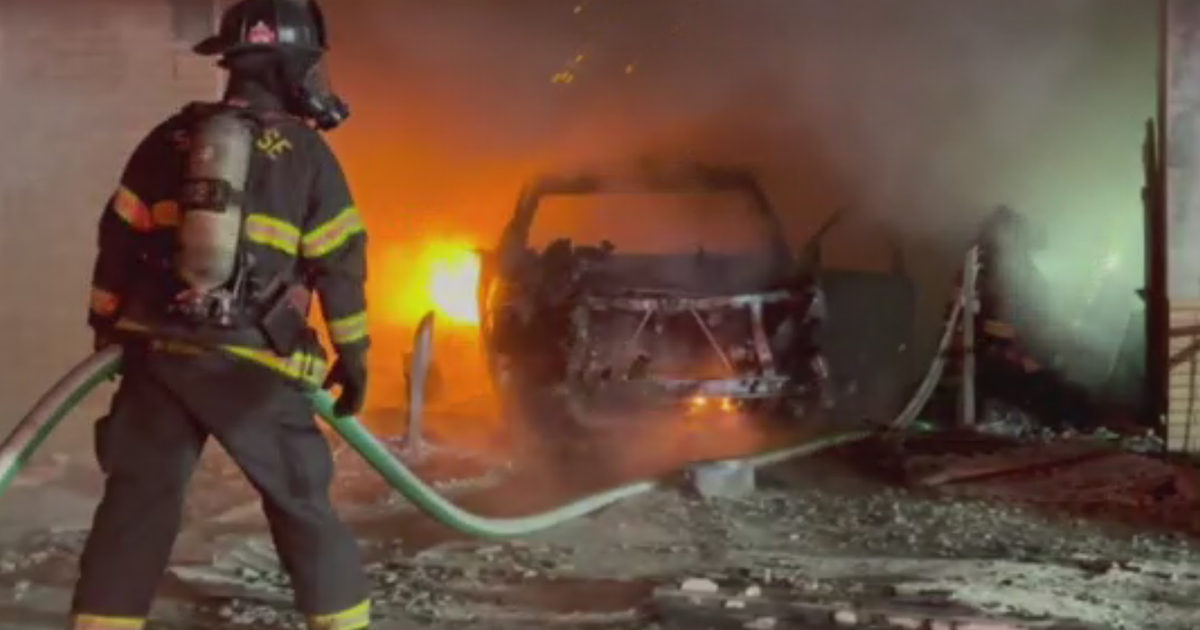The massive budget bill signed into law by President Donald Trump on Independence Day didn’t include everything on Big Tech’s wishlist, but the industry’s largest players stand to gain significantly from several provisions in the One Big Beautiful Bill Act.
Technology
Ultra-fast charging EV sports car can juice up in 5 minutes

Imagine pulling up to a charging station, plugging in your electric vehicle and driving off with a near-full battery in less time than it takes to grab a coffee.
Sounds too good to be true, right?
Well, Nyobolt might just be turning this scenario into reality.
GET SECURITY ALERTS, EXPERT TIPS – SIGN UP FOR KURT’S NEWSLETTER – THE CYBERGUY REPORT HERE
The prototype that’s turning heads
Nyobolt, a U.K.-based battery technology company, has recently unveiled a working prototype of an electric vehicle that can charge from 10% to 80% in just under five minutes. That’s not a typo, folks. We’re talking about adding 120 miles of range in about the time it takes to read this article.
To put this in perspective, Nyobolt’s prototype is charging twice as fast as the speediest EVs currently on the market. It’s like the Usain Bolt of the EV world, leaving other “fast-charging” vehicles in the dust.

THIS $112K LUXURY EV FROM CHINA CAN SHAKE AND JIGGLE OFF SNOW
The secret sauce: Nyobolt’s battery tech
So, what’s the magic behind this lightning-fast charging? Nyobolt has developed a unique battery with patented carbon and metal oxide anode materials. Coupled with low impedance cell design, integrated power electronics and software control. Nyobolt can create power-dense battery and charging systems. This results in ultra-fast charging without the typical degradation issues.
WHAT IS ARTIFICIAL INTELLIGENCE (AI)?
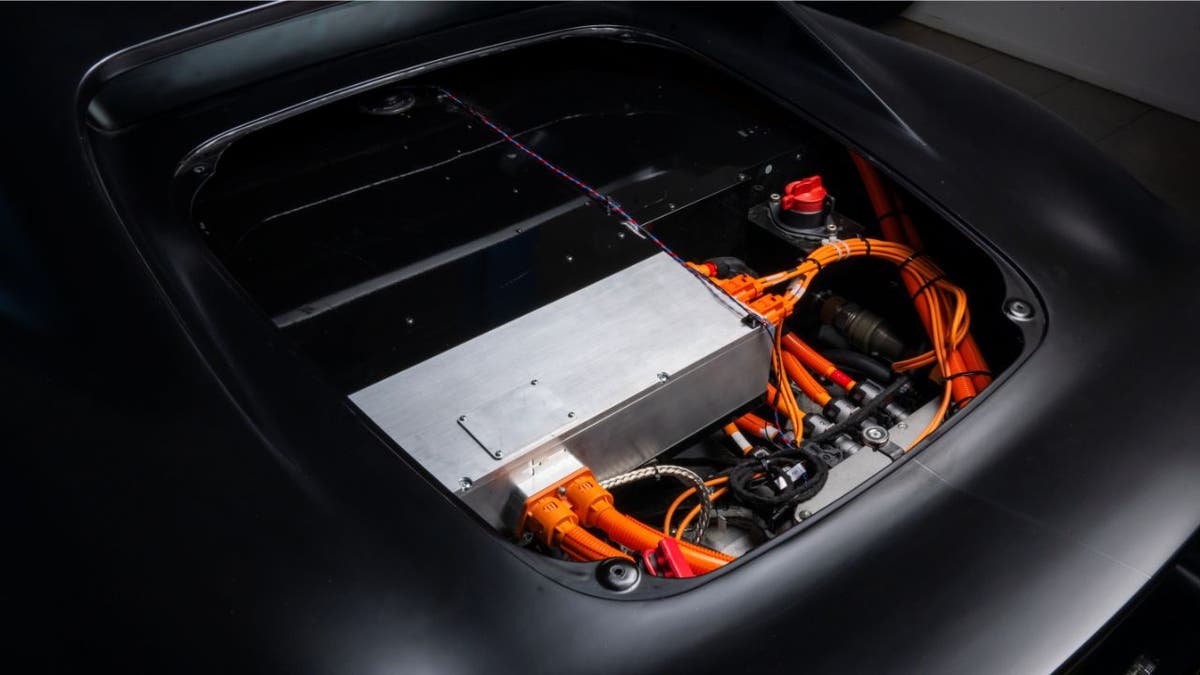
EV prototype battery (Nyobolt)
But speed isn’t the only trick up Nyobolt’s sleeve. These batteries can reportedly handle over 4,000 charge cycles while retaining more than 80% of their original capacity. That’s like running a marathon every day for years and still being able to sprint to the finish line.

EV prototype charging (Nyobolt)
IS THIS PINT-SIZED ELECTRIC VEHICLE ABOUT TO BE A BIG DISRUPTOR IN THE US?
A different approach to EV design
Nyobolt isn’t just focusing on the battery. They’ve partnered with design and engineering firm Callum to create a lightweight sports car prototype to demonstrate the technology. Instead of cramming in a massive battery for long range, Nyobolt opted for a smaller 35 kWh pack. The result? A nimble 2,756-pound vehicle that can still cover 155 miles on a single charge. It’s proof that sometimes less really is more. If Nyobolt’s technology lives up to its promises, we could be looking at a major shift in how we think about electric vehicles.

THE TINY ELECTRIC CAR THAT COMES DISASSEMBLED AND DELIVERED IN BOXES
The end of EV range anxiety?
With ultra-fast charging, the need for massive battery packs could become a thing of the past. Imagine lightweight, efficient EVs that can be charged in minutes rather than hours. This could make electric vehicles a viable option for a whole new segment of consumers.

How the EV technology could expand beyond cars
Nyobolt’s technology isn’t just limited to passenger vehicles. The company is already in talks with eight vehicle manufacturers and is looking at applications in robotics and heavy-duty commercial vehicles. This could revolutionize industries where downtime is costly.

Man charging EV prototype (Nyobolt)
Kurt’s key takeaways
While it’s important to remember that this is still a prototype, Nyobolt’s technology is incredibly promising. If they can successfully scale up production and integrate their batteries into mainstream vehicles, it could address two of the biggest hurdles in EV adoption: charging time and battery longevity.
Of course, there are still questions to be answered. How will this technology perform in real-world conditions? What will be the cost implications? And can our current charging infrastructure handle such high-power charging? Nevertheless, Nyobolt’s achievement is a testament to the rapid pace of innovation in the EV space.
How do you think ultra-fast charging technology like Nyobolt’s could change your daily life and the future of transportation? Let us know by writing us at Cyberguy.com/Contact.
For more of my tech tips and security alerts, subscribe to my free CyberGuy Report Newsletter by heading to Cyberguy.com/Newsletter.
Ask Kurt a question or let us know what stories you’d like us to cover.
Follow Kurt on his social channels:
Answers to the most asked CyberGuy questions:
Copyright 2024 CyberGuy.com. All rights reserved.

Technology
Nintendo’s slow drip of Switch 2 games is a feature, not a bug

When Nintendo first announced the Switch 2’s slate of launch titles, people were very quick to cry foul about how few original, exclusive games the company had lined up for its latest console. There were ports from other systems and updated versions of original Switch games. But Mario Kart World was the Switch 2’s only major new exclusive title, which, for some, put a further damper on a launch that was already mired in confusion about pricing and game key cards.
Back in April when Nintendo first announced all of the Switch 2 games slated to come out through the end of 2025, you could see that the company was loosely following a monthly release schedule for its new exclusives. June would go to Mario Kart World and Nintendo Switch 2 Welcome Tour. And Donkey Kong Bananza would drop in July amid the releases of a couple Switch 2 editions of older games. At the time, Nintendo said that Drag x Drive would debut at some point in “the summer,” but it has since pegged the game to a firm August 14th release date.
Currently, there’s nothing on the docket for September, but the month could easily go to Kirby Air Riders, which is supposed to come out this year. And after Pokémon Legends: Z-A’s release in October, the “winter” will belong to Hyrule Warriors: Age of Imprisonment (and maybe Metroid Prime 4: Beyond, which is also due out sometime in 2025).
Looking at Nintendo’s roadmap for the rest of the year, it feels as if the company is trying to pace things in a way that gives people time to really sit with and enjoy its exclusives. For every hardcore gamer who prides themself on speeding through a title and being the first to uncover or unlock all of its surprises, there are far more casuals who prefer taking their time. Nintendo could have opted to flood the zone with more exclusives from the jump — a move that probably would have made the Switch 2’s launch seem like a splashier beat in the console wars’ twilight hours. But by spacing things out, the company is guaranteeing that there will be a steady stream of new stuff for people to dig into, and giving people ample time to decide if they’re willing to pay the games’ higher prices.
The Switch 2 is Nintendo’s new flagship, which is to say it’s not going away anytime soon and there will be plenty more games for it in due time. Had Donkey Kong Bananza dropped alongside Mario Kart World, neither game would have been able to take up so much space and command attention they way they could with some distance between them. Releasing new titles at a steady pace was a major part of Nintendo’s vision for the original Switch, and that strategy paid off through the console’s life cycle. Now it looks like Nintendo’s sticking to its guns, and the Switch 2 will probably be better off for it.
Technology
US Army tests robot coyotes to prevent catastrophic bird strikes
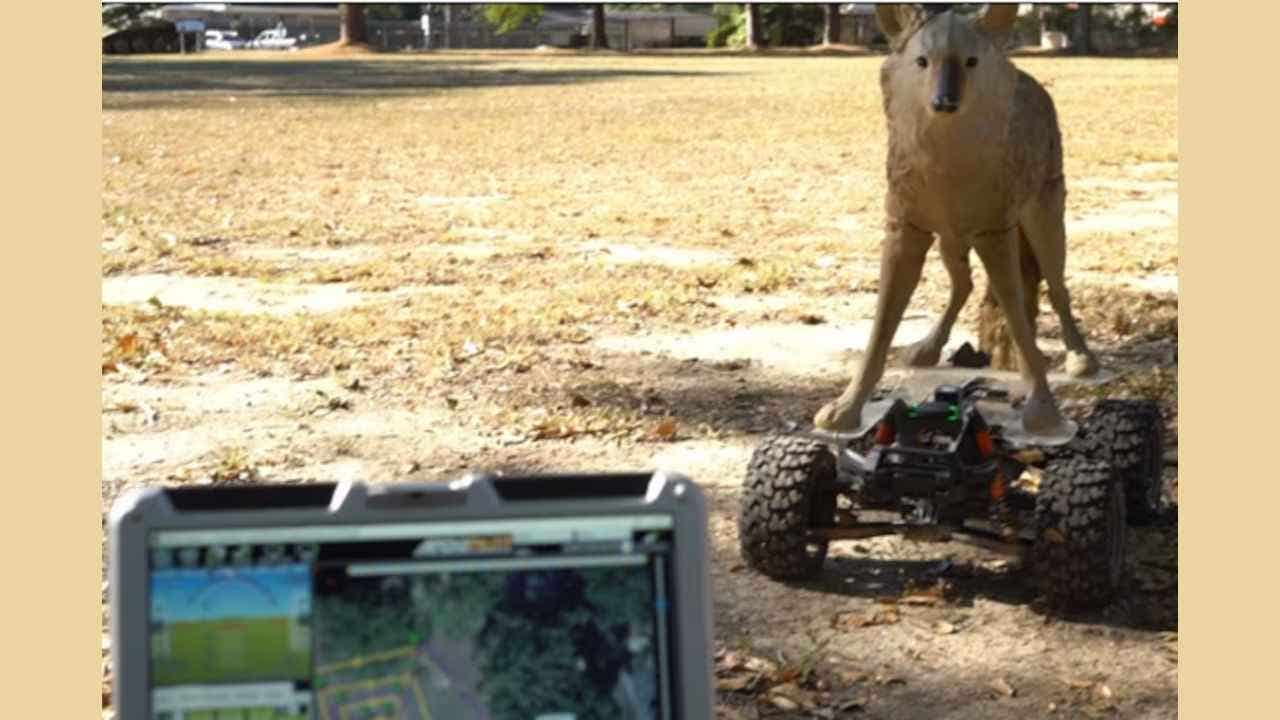
NEWYou can now listen to Fox News articles!
Why settle for a regular robot when you can have a robot coyote?
That’s the innovative question the U.S. Army Engineer Research and Development Center (ERDC) is answering as it rolls out robot coyotes for airfield wildlife control. These cybernetic prairie predators are a creative solution to a very real problem.
Sign up for my FREE CyberGuy Report
Get my best tech tips, urgent security alerts and exclusive deals delivered straight to your inbox. Plus, you’ll get instant access to my Ultimate Scam Survival Guide — free when you join my CYBERGUY.COM/NEWSLETTER
HEGSETH TEARS UP RED TAPE, ORDERS PENTAGON TO BEGIN DRONE SURGE AT TRUMP’S COMMAND
Robot coyotes for airfield wildlife control (U.S. Army Corps of Engineers)
The serious wildlife threat facing airfields today
Airfields face a constant battle with wildlife. Birds, rabbits and even deer can wander onto runways, creating dangerous situations for aircraft and crews. Birds are the biggest threat. When sucked into engines or hitting windscreens, they can cause catastrophic damage. In fact, the threat is so serious that the U.S. Civil Air Administration once built a “chicken gun” to fire bird carcasses at planes to test their resilience.
Traditional deterrents, like drones, dogs, falcons and even gas-powered cannons, have been used for years. But wildlife adapts quickly, and these methods don’t always keep animals away for long.
WHAT IS ARTIFICIAL INTELLIGENCE (AI)?
How robot coyotes work to scare off birds and animals
Enter the robot coyote. The ERDC, in partnership with wildlife biologists Stephen Hammond and Jacob Jung and the USDA National Wildlife Research Center (NWRC), has spent five years developing these unique machines. The idea is simple. Most animals instinctively avoid coyotes, so why not use that fear to keep them away from airfields?
The first prototypes, Coyote Rovers, started as Boston Dynamics Spot robots. However, these proved too slow to scare off wildlife. The team switched to four-wheeled Traxxas X-Maxx motorized cars, which can reach speeds of 20 mph. Each vehicle carries a plastic coyote dummy, blending just the right amount of realism and intimidation, all for about $3,000 each.
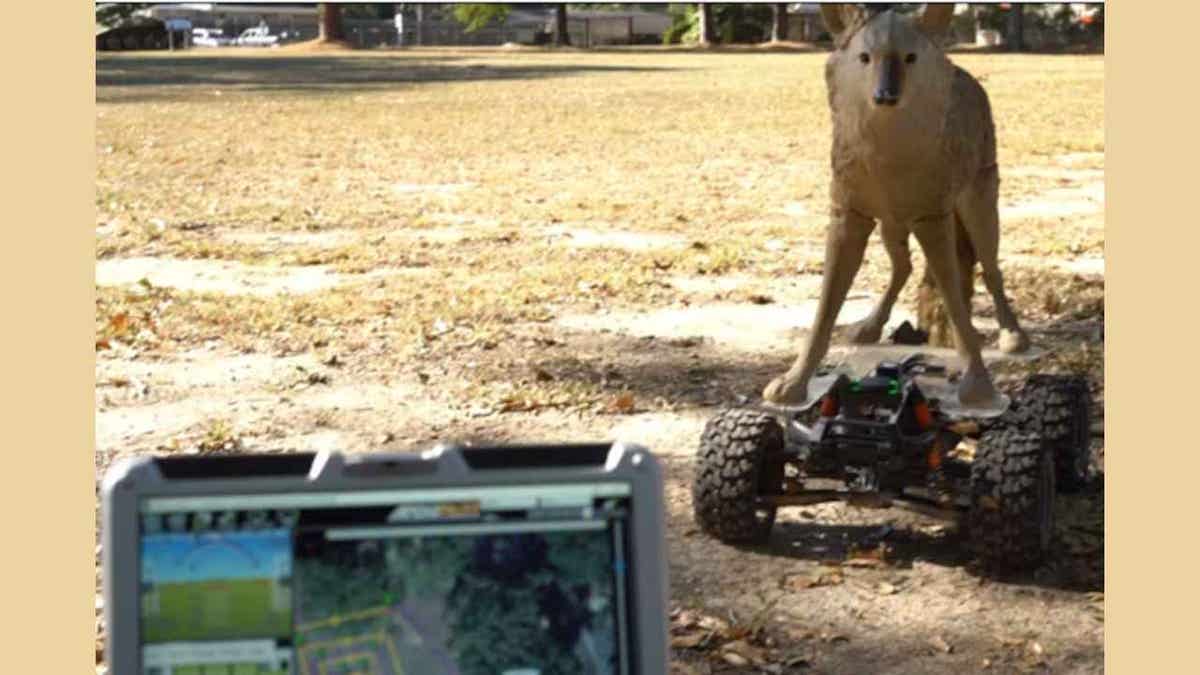
Robot coyote for airfield wildlife control (U.S. Army Corps of Engineers)
Inside the U.S. Army’s testing of robot coyotes on airfields
The robot coyotes have already been tested at several military airfields, including Naval Air Station Pensacola, Fort Campbell and Naval Air Station Whiting Field. These early trials showed promise. The robot coyotes successfully deterred birds and other animals, helping to keep runways clear and safe.
But the ERDC isn’t stopping there. The goal is to make these robot coyotes even smarter. Future versions may include programmed routes, exclusion zones and the ability to identify specific species. Imagine a robot coyote that can recognize a flock of geese and adjust its tactics on the fly.
What the future holds for airport wildlife control technology
The ERDC and USDA-NWRC are continuing to refine these robot coyotes for airfield wildlife control. New features are on the horizon, including onboard computers, artificial intelligence, cameras and sensors. The aim is to create a robust system that can operate autonomously, navigate tough terrain and adapt to changing conditions. These advances could revolutionize how airfields, and perhaps even commercial airports, manage wildlife hazards.

Robot coyotes for airfield wildlife control (U.S. Army Corps of Engineers)
Kurt’s key takeaways
Robot coyotes for airfield wildlife control are a creative and practical answer to a longstanding problem. By blending technology and biology, the U.S. Army is making airfields safer for everyone. As these systems become more advanced, we may see them used in airports around the world.
If robot coyotes can keep wildlife off runways, what other surprising animal-inspired robots might we see patrolling our critical infrastructure in the future? Let us know by writing to us at Cyberguy.com/Contact
Sign up for my FREE CyberGuy Report
Get my best tech tips, urgent security alerts and exclusive deals delivered straight to your inbox. Plus, you’ll get instant access to my Ultimate Scam Survival Guide — free when you join my CYBERGUY.COM/NEWSLETTER
Copyright 2025 CyberGuy.com. All rights reserved.
Technology
What Big Tech got out of Trump’s Big Beautiful Bill

The Republican-backed legislation is best known for its tax cuts on tips, deduction caps that could primarily benefit wealthy taxpayers, restriction on healthcare coverage for low-income and disabled Americans, cuts to renewable energy incentives, and tens of billions of dollars in funding to immigration enforcement. But it also includes restored tax deductions for research and development and other items that could benefit the tech industry, among other businesses.
In one high-profile fight, the tech industry failed to secure a moratorium on state AI laws, a proposal which had been supported by several trade groups and might have also affected a host of other state tech protections. But after months of lobbying from Congress to Mar-a-Lago, the industry will see slashed taxes and may receive new contracts from border enforcement funding, the Tech Oversight Project finds in a new report shared exclusively with The Verge. Some changes will likely benefit businesses of all sizes and sectors — while others may offer large companies in the tech industry the biggest benefits.
The budget bill essentially reverses a policy from Trump’s first term that limited how companies could write off research and development on their taxes. The 2017 Tax Cuts and Jobs Act (TCJA) forced companies to spread write-offs for domestic R&D costs across five years, rather than deducting them fully in the year they were incurred. Now, Congress is restoring the previous, more generous deduction setup, and small businesses can get retroactive tax write-offs for the last couple years when the changes — which took effect in 2022 — were in place.
In a recent report, Quartz linked the R&D deduction changes to the wave of layoffs across the industry, describing how it made it so companies could effectively only write off one-fifth of their R&D costs in the year they were incurred, rather than the full sum, making salaries for engineers and other high-skilled roles much more costly. The nonpartisan Institute on Taxation and Economic Policy (ITEP) found that in the three years in which the TCJA changes took effect, Alphabet, Amazon, Apple, Meta, and Tesla saw their tax bills rise a collective $75 billion as a result.
“The loss of full R&D expensing disincentivizes firms from significantly increasing their R&D investments”
So unsurprisingly, tech-backed groups like the Information Technology and Innovation Foundation (ITIF) and the Business Software Alliance (BSA) pushed to revert the rule. “The loss of full R&D expensing disincentivizes firms from significantly increasing their R&D investments because the cost of those investments has risen,” ITIF wrote in a blog post earlier this year.
Maintaining a lower corporate tax rate
Conversely, business groups successfully pleaded with lawmakers to keep a different change from the TCJA: a massive reduction in the corporate tax rate from 35 percent to 21 percent. In a letter to lawmakers last year, tech-backed Information Technology Industry Council (ITI) told lawmakers that the reduction had brought the US in line with peer countries, and provided US companies “a more level playing field against their international competitors,” which the nonprofit Tax Foundation found helped boost US investment. Democrats who have opposed the lower tax rates have framed it as a handout to corporate America.
Extending lower international tax rates
The new budget law also blocks a scheduled increase in the effective tax rates on things like the money companies make abroad based on US-based patents or other intangible assets.
These kinds of taxes — the base erosion and anti-abuse tax (BEAT), global intangible low-taxed income tax (GILTI), and the foreign-derived intangible income tax (FDII) — are generally meant to prevent shifty accounting practices like moving assets to a foreign subsidiary. Before the One Big Beautiful Bill Act passed, the effectively lowered rates through these three policies were set to expire at the end of 2025.
The tech industry argued protecting those low rates would keep US companies competitive with other countries, like France and the UK. “Several other nations already offer IP incentives,” ITI told lawmakers in an October letter. “It is essential that the FDII rate remains as low as possible.”
“The tax break disproportionately benefits large corporations with significant intellectual property portfolios”
But groups like the nonpartisan Financial Accountability and Corporate Transparency (FACT) Coalition and ITEP see lower rates for taxes like the FDII as a giveaway to the biggest players in the tech industry, which deal heavily in intangible assets like patents and trademarks.
“The tax break disproportionately benefits large corporations with significant intellectual property portfolios while doing little for smaller firms that lack similar assets,” ITEP wrote in a blog post last year, where it found that Google parent Alphabet reported over $11 billion in tax benefits from 2018 to 2023 as a result of the FDII.
Border protection funding could flow to tech
Alongside a significant budget increase for Customs and Border Protection (CBP) and other immigration-related funding, the law includes about $6 billion for border technologies, including surveillance systems. That money could flow to several large tech firms already engaged in the space.
Those include Peter Thiel-founded data company Palantir, which currently has a $30 million contract with Immigration and Customs Enforcement (ICE) to build “ImmigrationOS” to create “near real-time visibility into instances of self-deportation.” Thiel-backed Anduril also stands to gain if the agency expands infrastructure like the surveillance towers it already supplies to the government. MIT Technology Review reported in 2018 that Amazon Web Services hosted Department of Homeland Security (DHS) databases related to immigration, including a deep pool of biometric data.
Other tax-saving adjustments
Tech companies and other businesses will also benefit from changes in how business interest deductions are calculated, and a permanent extension of rules allowing companies to take a full deduction of certain equipment expenses. House Democrats have previously called this kind of tactic a “Tax Scam,” writing, “Two-thirds of the benefits go to corporations making over $250 million in revenue, and from 2018 through 2021, about two dozen of the largest corporations received roughly $50 billion in tax breaks through this provision.”
Some of the tax changes in the bill will benefit smaller firms and businesses across many different industries. But large tech companies are particularly well positioned to benefit from changes in how foreign profits on intellectual property are taxed and fuller R&D write-offs. After months of cozying up to the Trump administration with little to show for it, it looks like the largest players in the industry have finally notched some wins.
-

 News1 week ago
News1 week agoVideo: Clashes After Immigration Raid at California Cannabis Farm
-
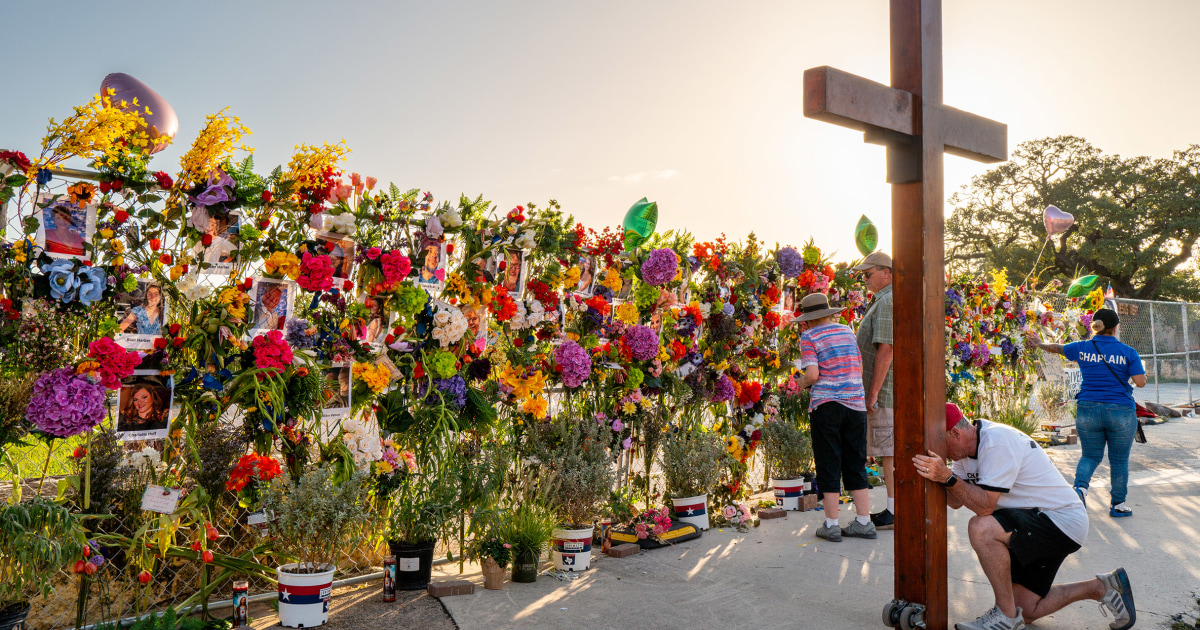
 News1 week ago
News1 week agoTrump heads to Texas as recovery efforts from deadly flood continue
-

 World1 week ago
World1 week agoNew amnesty law for human rights abuses in Peru prompts fury, action
-

 Movie Reviews1 week ago
Movie Reviews1 week agoMaalik Movie Review – Gulte
-
Movie Reviews1 week ago
‘Doora Theera Yaana’ movie review: Mansore’s mature take on relationships is filled with relatable moments
-

 Technology1 week ago
Technology1 week agoIt’s the final day of Prime Day 2025, and the deals are still live
-

 Politics1 week ago
Politics1 week agoDemocrat John Fetterman declares support for ICE, condemning any calls for abolition as 'outrageous'
-

 World1 week ago
World1 week agoRussia-Ukraine war: List of key events, day 1,235

